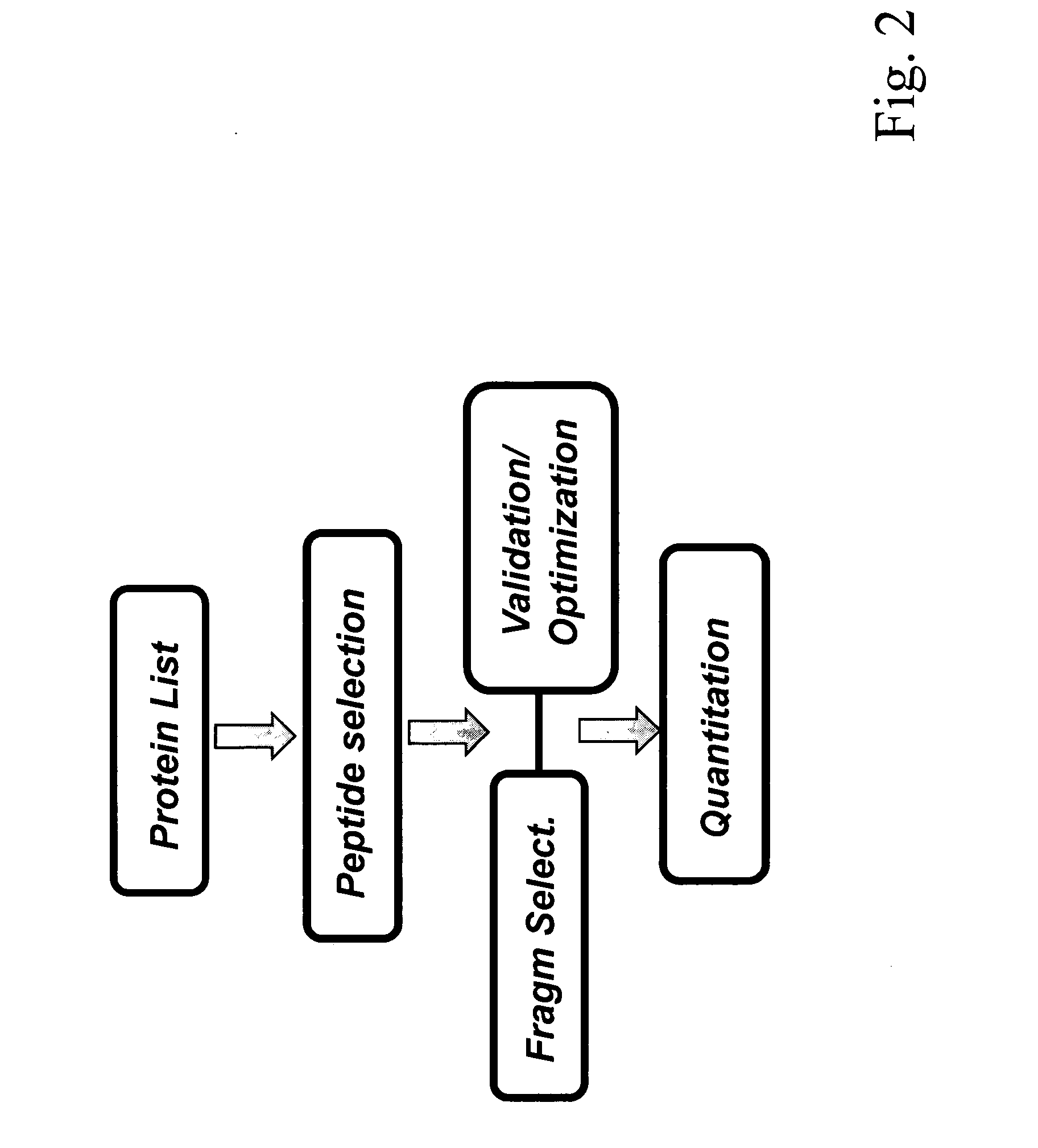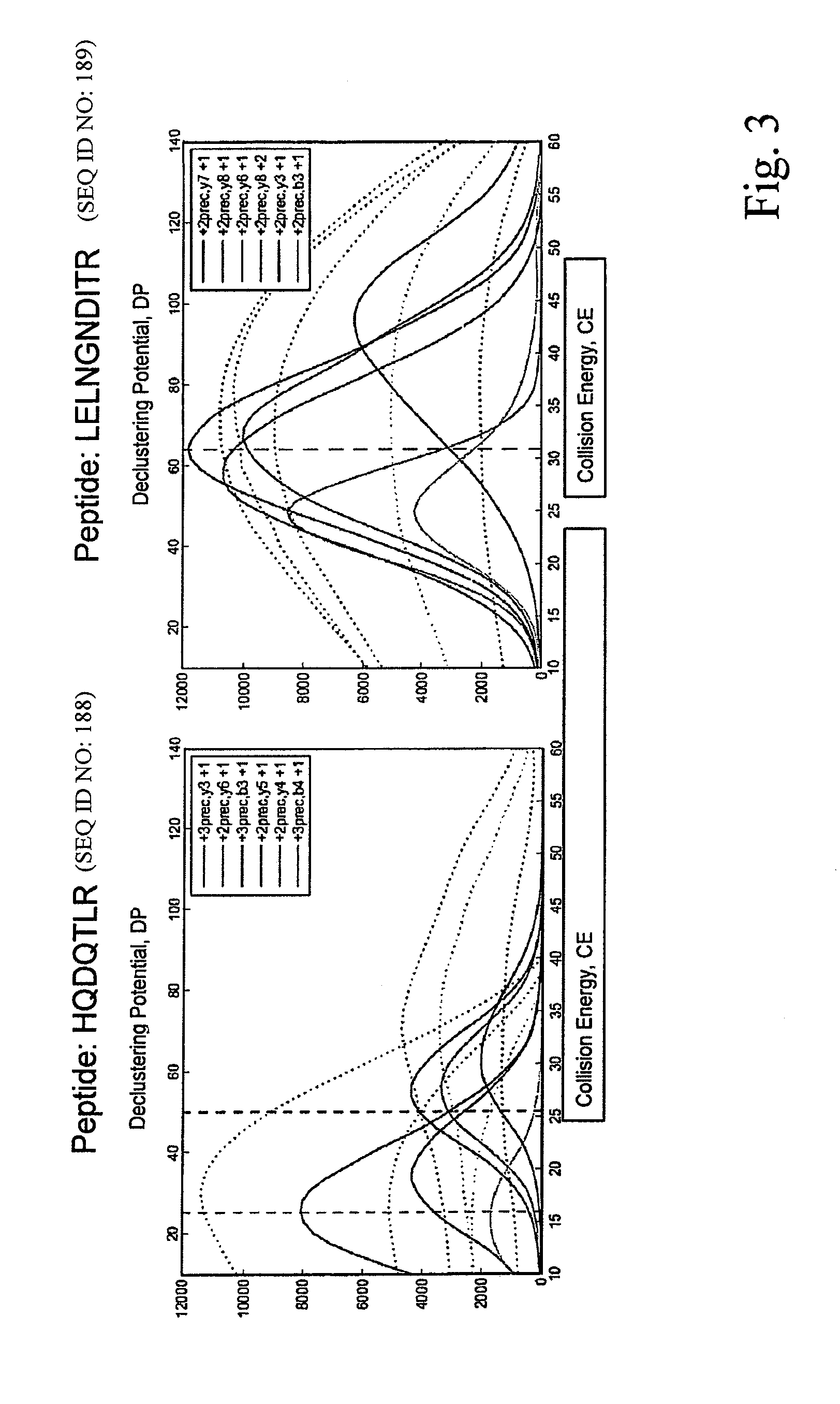Method for high throughput peptide/protein assay generation and assays generated therewith
a peptide/protein assay and high throughput technology, applied in the field of srm/mrm assay determination, can solve the problems of fragmentary data unsatisfactory for multiple applications, partially overlap, and inability to achieve quantitative proteomic analyses to a similar depth and consistency, and achieve the effect of increasing the number of assays measured and increasing the throughpu
- Summary
- Abstract
- Description
- Claims
- Application Information
AI Technical Summary
Benefits of technology
Problems solved by technology
Method used
Image
Examples
Embodiment Construction
[0060]In the following the invention shall be described in more detail with reference to the figures. The description is for the purpose of illustrating the present preferred embodiments of the invention and not for the purpose of limiting the same.
[0061]This description specifically details the application of SRM / MRM technology for proteomics in particular for quantitative proteomics. It describes the setup of a proteomic SRM / MRM experiment, including the selection of proteotypic peptides and the generation and validation of optimized peptide specific transitions. Furthermore, different aspects influencing sensitivity and precision of quantification by SRM / MRM are discussed. Finally, examples of successful applications of SRM are given to illustrate its unique potential for reproducible, quantitatively accurate proteomics.
[0062]Selected / Multiple reaction monitoring (SRM / MRM) is a promising technique with the potential to alleviate, at least in part, many shortcomings of current sho...
PUM
| Property | Measurement | Unit |
|---|---|---|
| cycle time | aaaaa | aaaaa |
| cycle time | aaaaa | aaaaa |
| cycle time | aaaaa | aaaaa |
Abstract
Description
Claims
Application Information
 Login to View More
Login to View More - R&D
- Intellectual Property
- Life Sciences
- Materials
- Tech Scout
- Unparalleled Data Quality
- Higher Quality Content
- 60% Fewer Hallucinations
Browse by: Latest US Patents, China's latest patents, Technical Efficacy Thesaurus, Application Domain, Technology Topic, Popular Technical Reports.
© 2025 PatSnap. All rights reserved.Legal|Privacy policy|Modern Slavery Act Transparency Statement|Sitemap|About US| Contact US: help@patsnap.com



